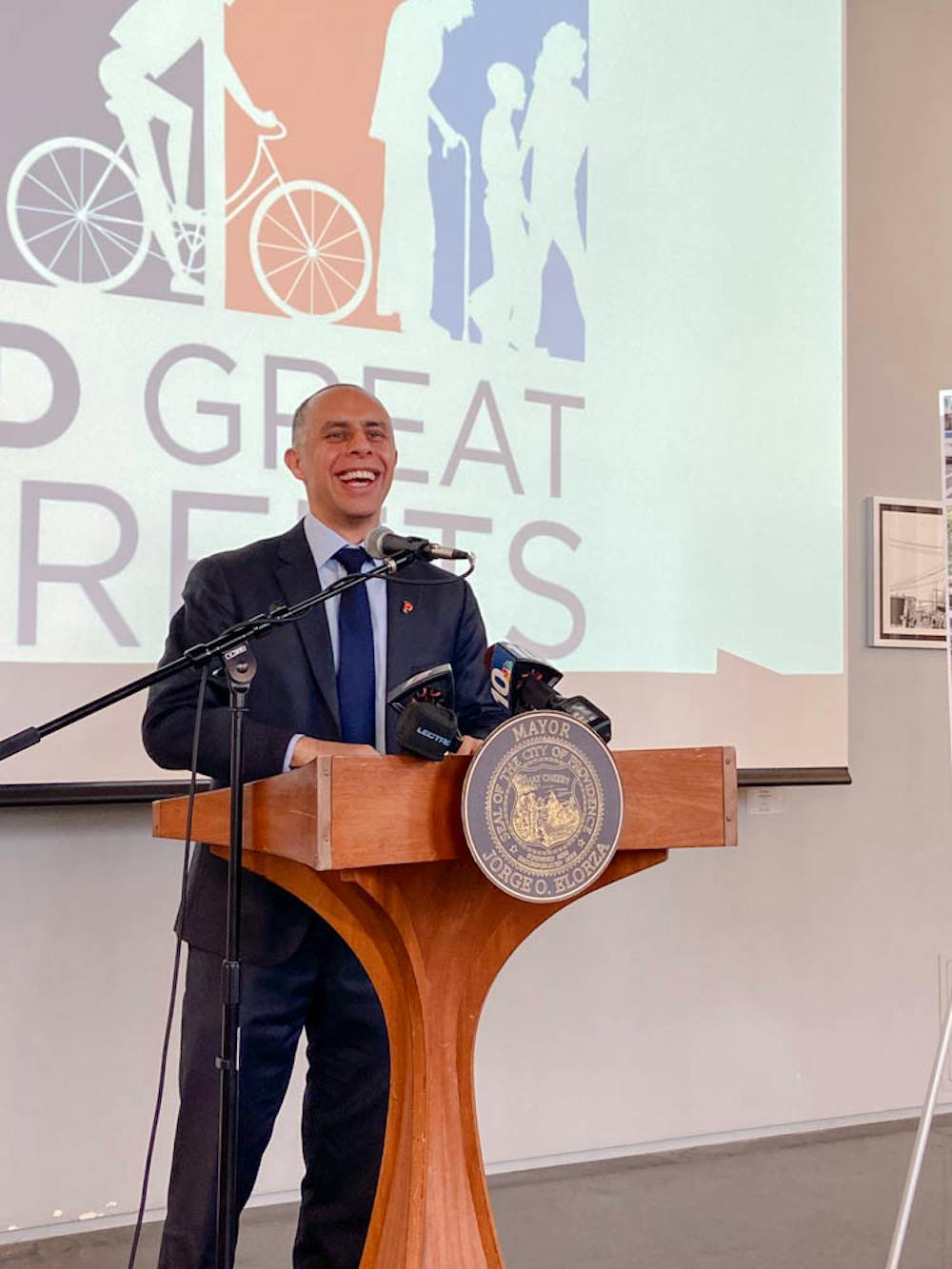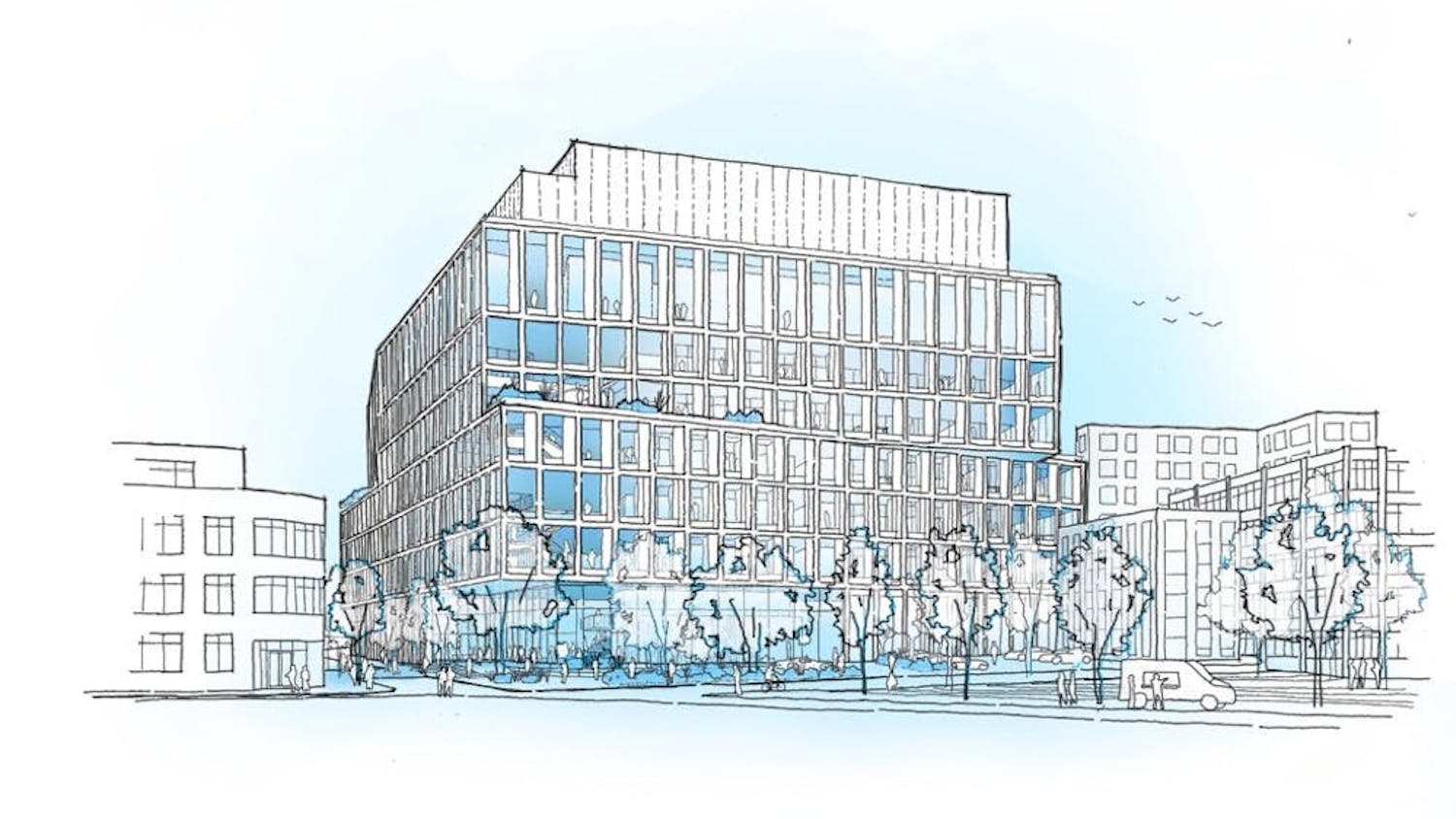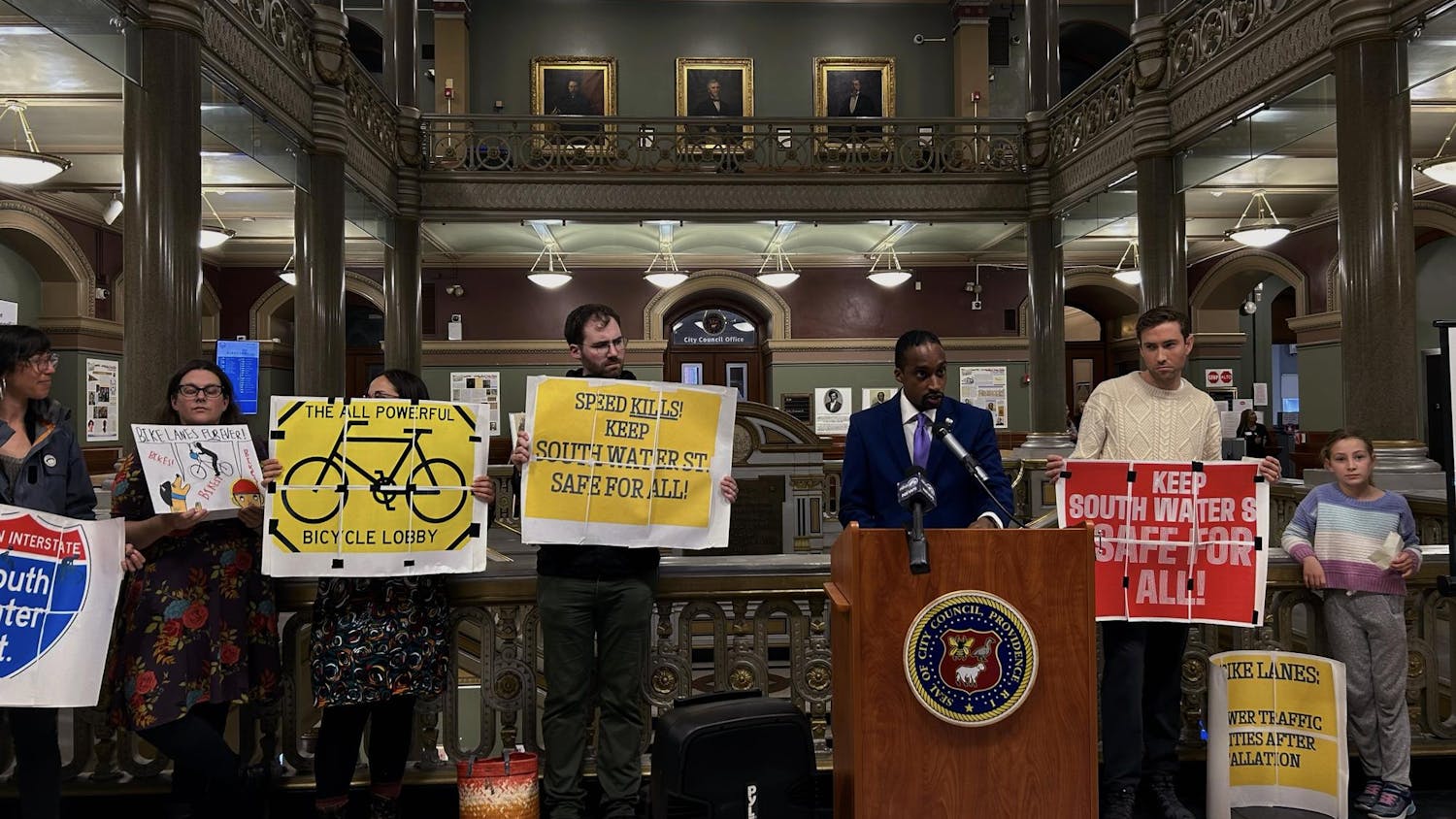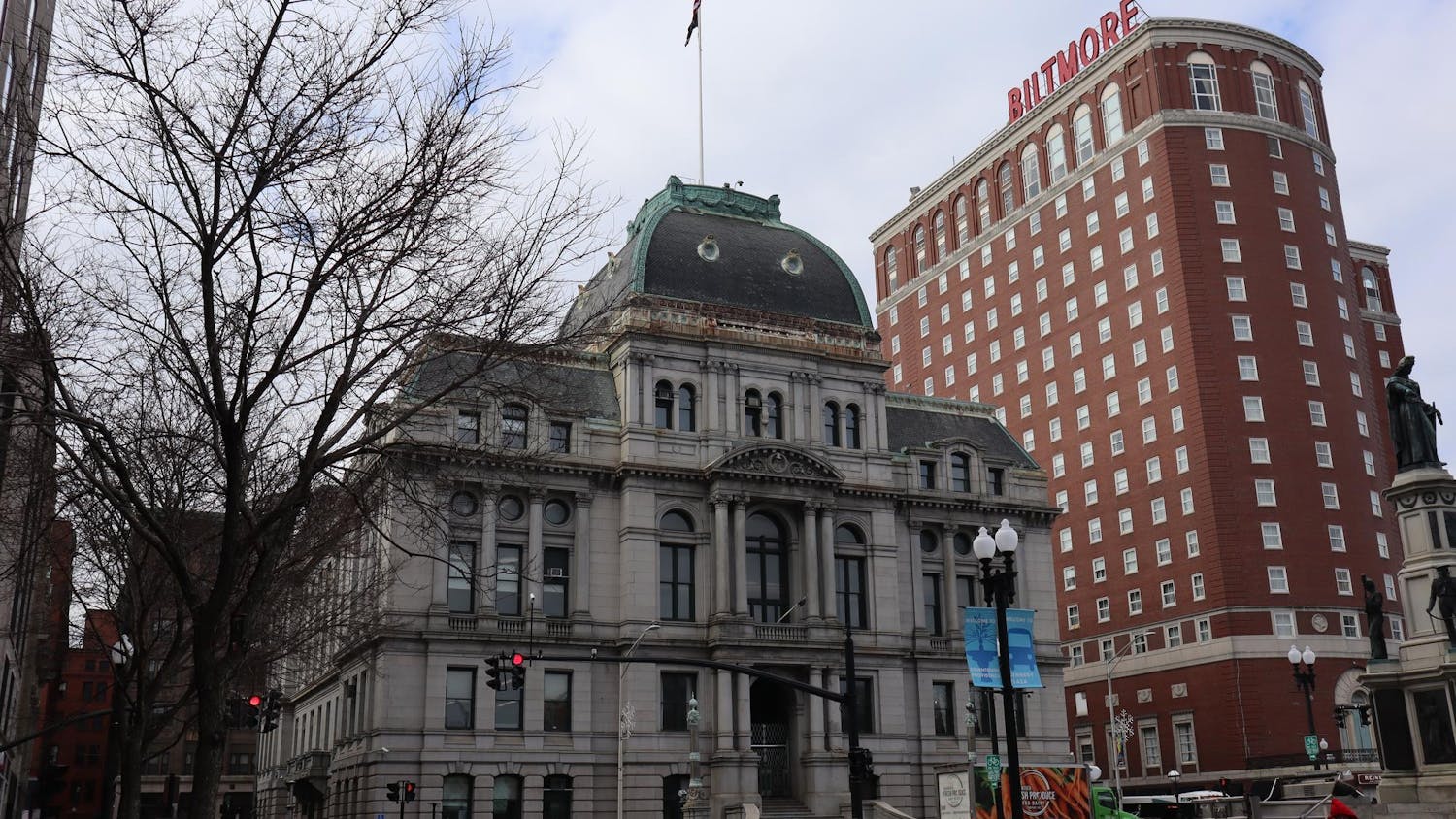Mayor Jorge Elorza remembers Providence streets as football fields, curbs as sidelines and basketball courts made with torn paper crates stuck to trees to make hoops.
At the unveiling of the Great Streets Initiative Monday at The Waterfire Arts Center, Elorza talked about his childhood playing on Providence’s streets to explain how important they are to the community. Streets are the largest element of the city’s infrastructure, taking up more than 13 percent of Providence’s land area.
The Great Streets Initiative aims to rehaul these veins and arteries of the city to make them safer, more sustainable and more accessible through increased green spaces, lighting and signage. The plan also includes the Urban Trail Network Master Plan, which will work to reduce residents’ reliance on cars by better protecting pedestrians and bicyclists.
As a part of Providence’s Capital Improvement plan, the Great Streets Initiative has already secured $20 million, Elorza said at the plan’s unveiling.
“It’s going to take us a long time to build out that vision,” Martina Haggerty, associate director of special projects, said at a press conference after the event. “We’re planning on moving forward really aggressively. We’re planning to build out over half of that network in the next two to three years.”
Despite containing nearly 1500 acres of streets and roadways, only 20 percent of Providence residents live near a “quality and safe trail and path,” Bonnie Nickerson, director of planning and development said during the event. If all 78 miles of the proposed improvements are carried out, then 93 percent of residents will have access to improved paths, she said.
Nickerson pointed to the Woonasquatucket River Greenway Extension — a hub of environmental reconstruction and green development — as a flagship for the initiative. The greenway started 25 years ago to connect Olneyville and downtown Providence with a safe, clean path. It received funding for its final mile as part of the plan.
Greenway Program Director for the Woonasquatucket River Watershed Council Nicole Vance discussed the social aspects of the improvements. In her hometown of Austin Texas, families gather around waterways to relax and get to know one another, but in Providence, waterways are often damaged and “unloved,” Vance said.
The development of the Woonasquatucket Greenway has already resulted in decreased crime and the reclamation of parks along the river.
The road improvements have community and environmental concerns in mind. “If we’re truly serious about a Green New Deal, if we’re truly serious about departing from our dependence on fossil fuels, this is another opportunity to increase more ways for people to get around,” said Ward 13 Councilwoman Rachel Miller.
On College Hill, proposed improvement sites include major student thoroughfares, such as Brown, Hope, Brook, Wickenden, Angell and Waterman streets. The city has also proposed improvements for the intersection of Waterman and Brown streets, near Page-Robinson Hall.
Pol Tavarez, a member of Providence’s Racial and Environmental Justice Committee, pointed to the potential equity impacts of the Great Streets plan. Seventy percent of all asthma cases in hospital emergency rooms come from low-income communities next to freight-truck corridors, like Allens Avenue and West End neighborhoods, Tavarez said. The plan looks to reduce the truck mileage along those areas.
“Those of us living on the front lines of environmental racism contribute the least to climate change, yet we experience the brunt of it,” Tavarez said, adding that marginalized communities should have input and the opportunity to collaborate on these issues. “We cannot have a plan that improves our city but displaces the residents who are living here,” Tavarez said.





